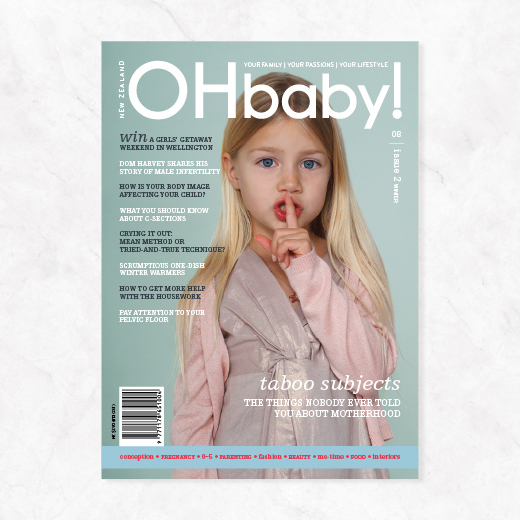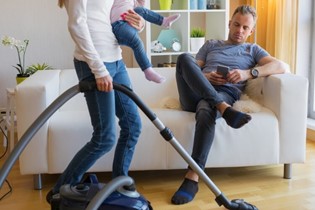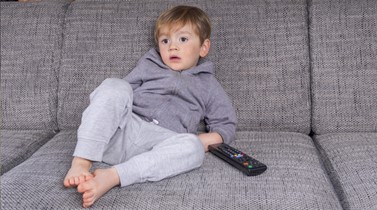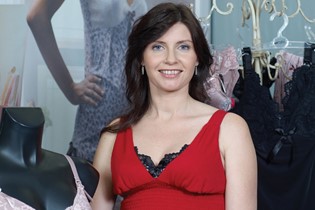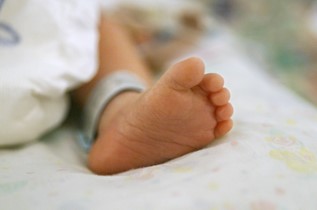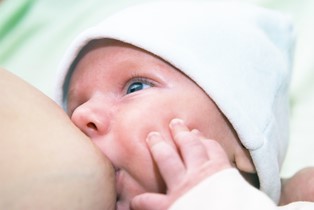Escaping the PND cloud

"PND is not a happy thing," Lis Good says emphatically. "It's a weird sensation. You know you should be happy, but you're not."
Sitting in her West Auckland home, with the rain beating down on the roof so loudly that we sometimes have to raise our voices to be heard, it seems an appropriate kind of day to talk about postnatal depression. Gloomy. Dreary. Dark. Depressing. "This miserable weather," Lis says, gazing out the window, "is what I felt like on the inside, all the time. It was always raining. There was this big, black cloud hanging over me, and I couldn't get away from it."
When her first child was born in 1998, Lis admits that her life wasn't in a good place. She was 24, in a not-so-great relationship, and the pregnancy was completely unplanned.
"I cried for three months after I found out I was pregnant," she admits. "I remember my midwife giving me a checklist of risk factors for antenatal depression. There were 10 things on the list, and I ticked nine of them. And all my midwife said was, 'Well, we'll just have to be extra vigilant after the baby is born.'
Lis muddled through the rest of the pregnancy, working right up until three days before her daughter's birth in January 1998. Her little girl, Hannah, came early at 36 weeks, and things quickly got worse. "She wouldn't feed, was a low birth weight, and had hypothermia from being premature," recalls Lis. "We spent 12 days in hospital before we were discharged. By then, my depression had well and truly set in."
So Lis went home to care for her baby - but the big black cloud was still there. "I made every effort to bond with Hannah, even though I was really depressed. Baby massage, attachment parenting... I did it all. But my heart wasn't in it. I became really good at 'faking it'."
Eventually Lis was diagnosed with PND, but she admits she was "treatment resistant". "I wanted to breastfeed, and in those days, they didn't know if the medication was safe for breastfeeding mothers. Finally, two years after Hannah was born, I went on medication and started to even out."
In early 2002, Lis learned she was pregnant again. "I was stoked to be pregnant," she remembers, smiling. "I had this beautiful big tummy. But I was also aware that I was becoming depressed again, so I did whatever I could to try to stave off that black cloud."
Lis, a childbirth educator, extensively researched postnatal depression and decided to have a home birth. "There have been studies suggesting that women who have home births are less postnatally depressed, so that was what I planned. It was a cold, wet, rainy August day when Ella was born. I had a good labour, but Ella was a big baby, and I had a fourth-degree tear. My midwife stitched me up at home, but I lost heaps of blood, and that's when things started to go downhill."
After stitching up Lis's tear for over an hour, the midwife determined that she needed to go to hospital and have surgery to completely close the tear. Lis wanted skin-to-skin contact with Ella, but instead, was rushed to hospital, where she spent an hour in theatre getting the tear repaired. "I found it incredibly violating to be in an operating theatre with my bum hanging off the end of the table, my legs in lithotomy, facing the door, with no drape or anything, and people coming and going. I felt like a piece of meat."
Afterwards, Lis recalled, the surgeon who'd operated on her told her, "You're going to be incontinent for quite a while. And with your next baby, you need to be induced at 38 weeks or have an elective C-section."
Lis spent six days in hospital recovering from the tear - an incredibly stressful time for her. "My milk wasn't coming in, and Ella lost 14% of her birth weight, so they made me supplement her with formula. She had reflux and wouldn't feed. All I did was cry."
After six days, Lis says, she had reached the point where she could cope- barely. "I could get up, have a shower, and try to feed the baby. That was it."
But things got worse. Immediately after returning home, the entire family got a virus and were sick for 48 hours. And for the next four months, Lis recalls, the black cloud parked itself in her drive-way and refused to budge. "I couldn't interact with anyone. I cried endlessly. All I did was sleep, feed, and eat. That was it."
Right before Christmas that year, the depression unexpectedly lifted. "One day, I woke up and said, 'The cloud is gone. I feel okay."
But the mood swings didn't stop there, either. After the breakup of her relationship with her daughters' father in 2005, Lis experienced manic episodes and periods where she felt so low, she didn't think she could cope. Finally, last year, she was diagnosed as bipolar and put on a medication that is working for her situation. She's also in therapy, and has made her mental health a priority.
"I've finally put myself at the top of the list," she says. "I am the most well I have been in a long time. I've learned that if my emotional fuel tank isn't full, there is no way I can give to anyone else. If you're constantly running on empty, there's nothing left - you burn out.
"I survived PND by the skin of my teeth. I made the effort to seek help - and I'm glad I did, for my daughters' sakes. I'm the best mother I can be for now, and it can only get better."

AS FEATURED IN ISSUE 2 OF OHbaby! MAGAZINE. CHECK OUT OTHER ARTICLES IN THIS ISSUE BELOW
